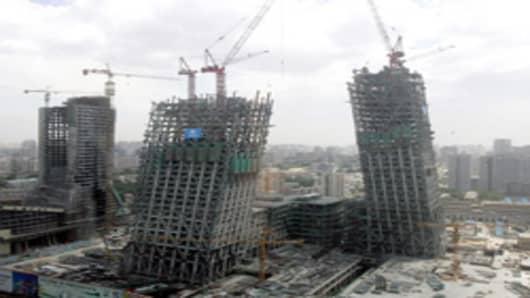In an unguarded moment in 2007, the man anointed to take over next year as the helmsman of the world’s second-largest economy revealed his doubts about China’s economic growth statistics.
The country’s official gross domestic product figures are “man-made” and therefore unreliable, Li Keqiang told the U.S. ambassador at the time, adding with a smile that he regarded them as being “for reference only.”
When evaluating the speed of economic growth Mr. Li, who is expected formally to replace Wen Jiabao as China’s Premier next March, said he focused instead on three sets of data — electricity consumption, rail cargo volumes, and disbursement of bank loans.
If Mr. Li’s assessment is correct, the Chinese economy is in a lot more trouble than headline gross domestic product(GDP) figures have indicated until now.
Less closely watched economic data released in recent days, including figures for electricity, rail cargo, and bank loans, have all shown a steep drop in activity that appears to have caught policymakers by surprise.
China’s GDP statistics are only released every three months and in the first quarter of this year they appeared to show a continuation of the gradual decline that has been under way for the past year.
An 8.1 percent expansion in the first three months from the same period a year earlier was a clear deceleration from 8.9 percent growth in the fourth quarter of last year, but it could hardly be considered a “hard landing” for the high-flying Chinese economy.
Following this relatively strong reading, most analysts and government officials declared that growth had bottomed out in the first quarter and the rebound would begin in April.
“Sell-side analysts and Chinese officials wanted to believe the story that this was just a little dip and the economy would come roaring back,” said Patrick Chovanec, a professor of business at Beijing’s elite Tsinghua university. “But those forecasts were mostly a triumph of hope over reason.”
China's Electricity Production
China’s electricity consumption in April hasn’t been published yet, but electricity output increased just 0.7 percent last month from a year earlier, compared with a 7.2 percent increase in March and an 11.7 percent annual increase in April 2011.
Rail cargo volumes in the first few months of the year increased by low single digits, or about half the pace they were growing this time last year, and banks extended far fewer new loans than expected.
“China’s been riding an investment boom over the last three years that everyone recognized was unsustainable and now we’re seeing what unsustainable looks like,” Mr. Chovanec said. “The unraveling of this investment boom is happening with nothing to replace it and that means China is in store for much lower GDP growth than we’ve become accustomed to.”
Much of the current slowdown has come from the slumping real-estate market, where government efforts to rein in a credit-fuelled bubble are starting to look a little too effective.
Investment in real estate, which directly accounts for about 13 percent of GDP, has dropped precipitously in just the past few months, with construction of new residential floor space falling 4.2 percent in the year to April from the same period last year. That compared with growth of 5.1 percent in the first two months and 16.2 percent growth in new starts this time last year.
A 51 percent drop in sales of Chinese bulldozers in March from the same month a year earlier reinforces the picture of plummeting construction.
But the slowdown is coming from more than just a downturn in real estate.
Chinese exports and imports in April were much weaker than predicted, with imports expanding just 0.3 percent from a year earlier, compared with the average analyst forecast of about 11 percent growth.
Leading commodity imports slowed sharply while industrial machinery imports fell significantly, indicating a “worrying downturn in industrial investment,” according to Stephen Green, an economist at Standard Chartered. “In the absence of further policy easing, we expect growth to continue to slow for the remainder of the second quarter.”
Many analysts believe the Chinese government has already waited too long to stimulate the slowing economy. The purge of Chinese leader Bo Xilai last month and the resulting political turmoil is one reason why Beijing has not acted sooner but some economists say its options for boosting growth are more limited than in the past.
In response to recent dismal data, the central bank on Saturday cut the portion of deposits that banks must hold in reserve to encourage more credit to flow into the economy.
But the huge flood of easy credit and government-backed investment unleashed after the global financial crisis has left Beijing with limited firepower this time round amid concerns about resurgent inflation and bad loans at the state-owned banks.
As he prepares to take office next year, Mr. Li must be hoping his assumptions were wrong and that China’s GDP figure is the more accurate reading. Otherwise he may be faced with a deteriorating situation that he has relatively little power to address.


